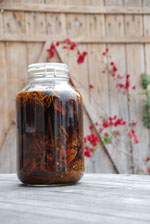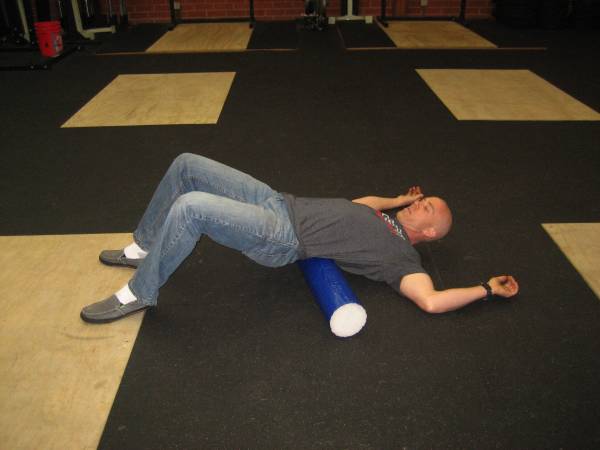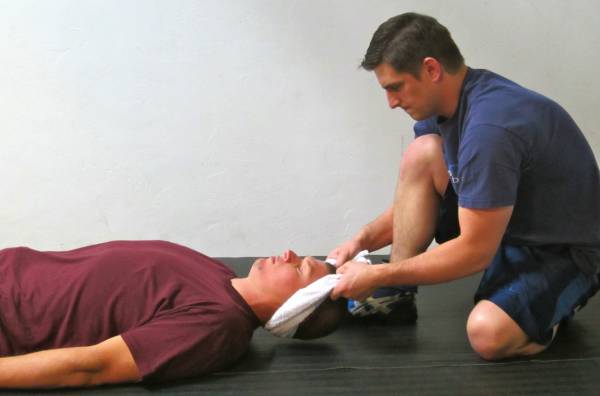 There are two primary types of liniments, the oil based and alcohol based. Aside from using oil or alcohol to extract specific therapeutic properties from the herbs, there are several other ways liniments can help facilitate a curative result. To read more about this topic please see my article on how liniments work here.
There are two primary types of liniments, the oil based and alcohol based. Aside from using oil or alcohol to extract specific therapeutic properties from the herbs, there are several other ways liniments can help facilitate a curative result. To read more about this topic please see my article on how liniments work here.
Liniments can be made at home from raw herbs or they can be purchased. In this article I will address some very inexpensive, over the counter liniments, that can be useful to any serious athlete’s or martial artist’s training kit. Liniments are best used to help with minor bruises, strains and pulls, as well as recovery from injury and should not replace proper medical intervention.
The following are a few of the many over the counter liniments that I really like, and some basic guidelines on how and what to use them for.
 Po Sum On. This is a fairly mild liniment. It is considered to be more of a massage oil by most practitioners of Traditional East Asian Medicine. It is cooling in nature, and can be rubbed into the chest to help open the lungs in cases of asthma or cough. This liniment is also being used to alleviate sore throat by placing 1 drop on the tongue.
Po Sum On. This is a fairly mild liniment. It is considered to be more of a massage oil by most practitioners of Traditional East Asian Medicine. It is cooling in nature, and can be rubbed into the chest to help open the lungs in cases of asthma or cough. This liniment is also being used to alleviate sore throat by placing 1 drop on the tongue.
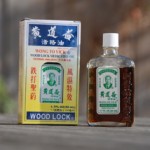 Woodlock. It is believed to have been passed down and based on an ancient formula developed out of the 5 Animal school of Kung Fu. Woodlock is a very good, general liniment for sports injuries, minor sprains, bruises, muscle and joint aches, and pains, as well as arthritic conditions. This liniment is also referred to as the “bow and arrow” for arthritis. This is because of its great versatility. It can be used to treat conditions that are improved with heat or cold, it can be used to treat aches and pains that wander or move around (may not always stay in a fixed location), and it can help with arthritic conditions that become worse during damp or rainy weather. To be clear, Woodlock is not used to cure arthritis, but simply to help manage the associated discomfort.
Woodlock. It is believed to have been passed down and based on an ancient formula developed out of the 5 Animal school of Kung Fu. Woodlock is a very good, general liniment for sports injuries, minor sprains, bruises, muscle and joint aches, and pains, as well as arthritic conditions. This liniment is also referred to as the “bow and arrow” for arthritis. This is because of its great versatility. It can be used to treat conditions that are improved with heat or cold, it can be used to treat aches and pains that wander or move around (may not always stay in a fixed location), and it can help with arthritic conditions that become worse during damp or rainy weather. To be clear, Woodlock is not used to cure arthritis, but simply to help manage the associated discomfort.
Traditionally, Woodlock is applied by using acupressure methods. The liniment is applied directly on the tender point of pain, and then held with finger pressure on the point for around 15 minutes. It can also be applied using a conventional massage method and still work effectively.
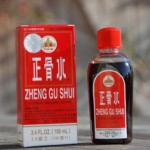 Zheng Gu Shui. The translation of Zheng Gu Shui is “Correct Bone Water” or simply, “Bone Mending Water”. Zheng Gui Shui is very warm, very strong, and used to treat deep bruising of the bone, hairline fractures, and other deep level injuries. I had one teacher from Hong Kong once tell me that many people in China consider this liniment to be a National Treasure because it is so powerful.
Zheng Gu Shui. The translation of Zheng Gu Shui is “Correct Bone Water” or simply, “Bone Mending Water”. Zheng Gui Shui is very warm, very strong, and used to treat deep bruising of the bone, hairline fractures, and other deep level injuries. I had one teacher from Hong Kong once tell me that many people in China consider this liniment to be a National Treasure because it is so powerful.
Zheng Gu Shui is traditionally applied by soaking cotton balls in the liniment and then wrapping the cotton loosely over the affected area with a gauze or tape. It can then be left on for thirty minutes, or up to an hour and a half. In a case of a fracture, this method should be applied twice daily after the bone has been properly set. Traditionally, it is believed that Zheng Gu Shui is so strong that it should not be rubbed into the body, however, I have seen it applied this way to minor injuries without any complications.
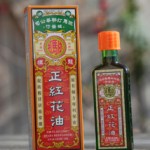 Red Flower Oil. This liniment is a combination of several oils. Red Flower Oil can be used for later stage injuries, muscles pulls, joint pains, strains, and bruising. It is very good for treating cold joints or pain that is made worse in the cold. Red Flower Oil can also be used for warming up the joints and muscles before training, and I have personally used it for this purpose many times. When using this liniment to prepare the muscles and joints for training; it is important to note that it is not intended to replace a proper warm-up before training.
Red Flower Oil. This liniment is a combination of several oils. Red Flower Oil can be used for later stage injuries, muscles pulls, joint pains, strains, and bruising. It is very good for treating cold joints or pain that is made worse in the cold. Red Flower Oil can also be used for warming up the joints and muscles before training, and I have personally used it for this purpose many times. When using this liniment to prepare the muscles and joints for training; it is important to note that it is not intended to replace a proper warm-up before training.
The traditional method of application is to apply a damp warm towel to the affected area first. Once the affected area has been warmed up by the towel, remove it and dry the skin, then massage in the oil until it has been absorbed into the skin.
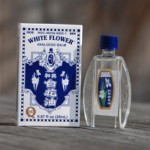 White Flower Oil. White Flower Oil is made up of several very strong aromatic herbs. This liniment can be placed in a small drop under the nose to open the nasal orifices and help clear the sinuses, or alleviate sinus headaches. For headaches, apply the oil with a cotton ball on the temples and or the forehead. This liniment is also effective for alleviating itching and discomfort associated with mosquito and bug bites. Simply apply the oil to the affected area with a cotton ball. Avoid contact with the eyes.
White Flower Oil. White Flower Oil is made up of several very strong aromatic herbs. This liniment can be placed in a small drop under the nose to open the nasal orifices and help clear the sinuses, or alleviate sinus headaches. For headaches, apply the oil with a cotton ball on the temples and or the forehead. This liniment is also effective for alleviating itching and discomfort associated with mosquito and bug bites. Simply apply the oil to the affected area with a cotton ball. Avoid contact with the eyes.
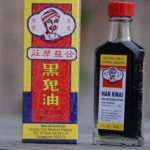 Black Ghost Oil. Labeled, Hak Kwai Pain Relieving Lotion, this liniment is used for deep bruises and injury just above the bone. It is recommended for injuries below thick muscles without noticeable swelling or dislocation. It is considered the most effective oil for this type of injury.
Black Ghost Oil. Labeled, Hak Kwai Pain Relieving Lotion, this liniment is used for deep bruises and injury just above the bone. It is recommended for injuries below thick muscles without noticeable swelling or dislocation. It is considered the most effective oil for this type of injury.
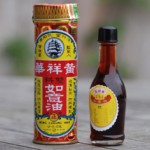 U-I Oil. Pronounced “ooh-ee”, this liniment is used for stiff neck, stiff back, sore muscles, and pain or strain resulting from overexertion. This is a very warm liniment and it contains oils from the herb, Artemisia Vulgaris, as one of it’s major ingredients. Known as Mugwort in the west, and used for Moxa therapy in Chinese Medicine, this herb is commonly used for heat therapy and is useful for treating pain associated with cold, stiff muscles, and joints.
U-I Oil. Pronounced “ooh-ee”, this liniment is used for stiff neck, stiff back, sore muscles, and pain or strain resulting from overexertion. This is a very warm liniment and it contains oils from the herb, Artemisia Vulgaris, as one of it’s major ingredients. Known as Mugwort in the west, and used for Moxa therapy in Chinese Medicine, this herb is commonly used for heat therapy and is useful for treating pain associated with cold, stiff muscles, and joints.
For best results, soak a paper towel or gauze with the herb and place it over the affected area, then cover with a plastic wrap and apply a hot towel / pack over the top. This liniment can be massaged into the affected area with a good result as well.
Stay tuned in my next article I’m going to explain how to make your own customized liniments at home! Don’t want to miss any thing? Make sure to Subscribe to my website, it’s FREE and I promise to notify you with a short concise email every time I post a new articule or training tip.
![]()
Also for your convenience I’ve linked all the liniments discussed in this article to where they can be purchased for the best price in the slideshow widget below.


